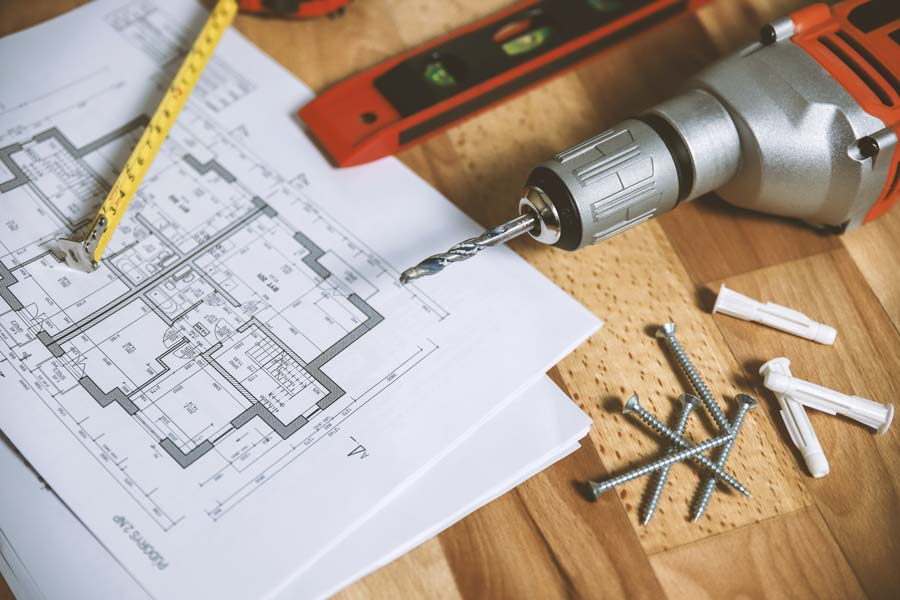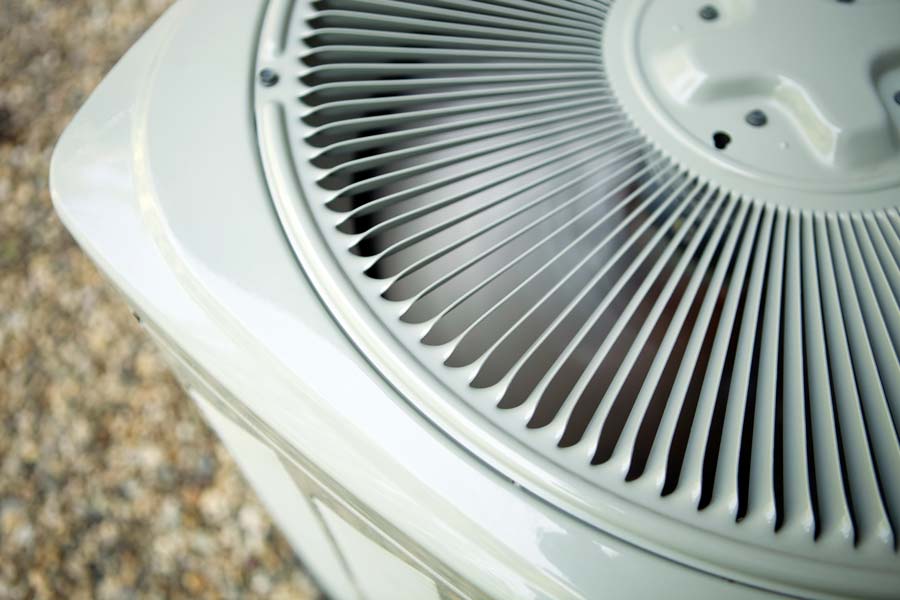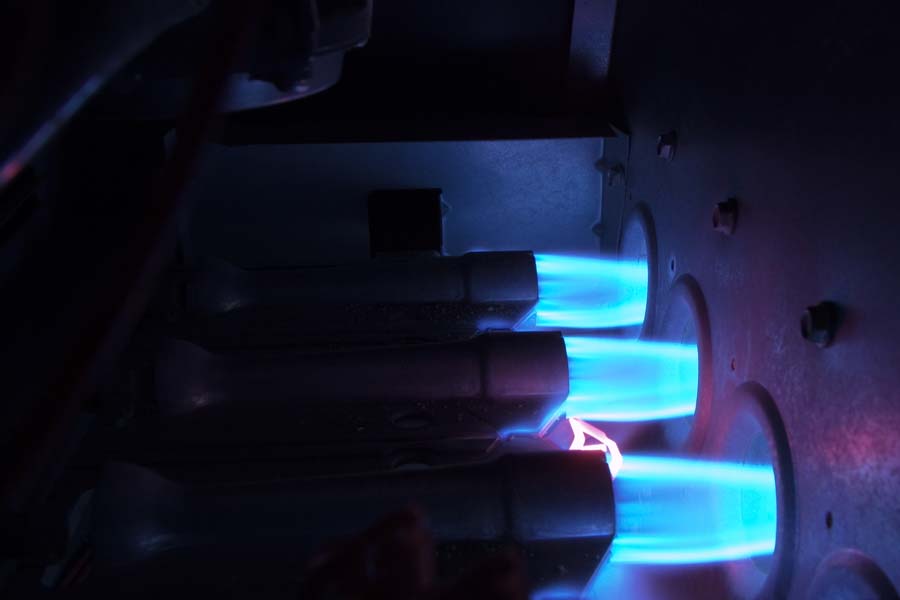New Installation

Whether you're retrofitting an older home with no central HVAC system or building a new home, correctly sizing the system to the size of your home during a new HVAC installation ensures the system will regulate temperatures correctly for optimal comfort all year round.
A properly trained HVAC professional will be able to precisely measure the square footage of your home, either from a blueprint or by measuring all the rooms in the existing house, as well as consider other essential factors like the number of occupants in the home, the number of windows and doors, the home's climate and orientation to the sun, and placement of the ductwork.
At Airview AC, nestled in the vibrant heart of McKinney, Texas, we're not just about AC installations but about creating environments where comfort meets reliability. Our journey spans a vast landscape, reaching out to communities far and wide, from the bustling streets of Allen and Frisco to the serene outskirts of Tioga and Van Alstyne. Determining the right size HVAC system to install in your home is a complicated one that is best left to the professionals at Airview AC. You can find our team helping around nearby Sherman, Princeton, and other surrounding areas.

How To Determine Your Home's Square Footage:
If you're working with an architect or builder, they can provide you with the home's overall square footage. You can also obtain it from the blueprints of your new home. If you're retrofitting an older home, you'll need to measure it yourself. Use a tape measure to determine the overall length and width of a room. Multiply those together for the approximate square footage of that room. Repeat this process for each room in the home, including all habitable spaces like finished basements, closets, hallways, and stairways. Add them all together. This is the total square footage you'll use for estimating purposes.

How To Determine The Size of Air Conditioner You Need:
The Art of AC Installation: A Closer Look
Understanding Your Needs: Every home and business in areas like Anna, Aubrey, and beyond has unique needs. We start by assessing your space, considering factors like size, layout, and your specific comfort requirements. This ensures that the system we install is perfectly tailored to provide maximum efficiency and comfort in Merit and Pilot Point.
Choosing the Right System: With many options on the market, from energy-efficient models in Prosper to advanced systems in Plano, our expertise guides you through selecting the ideal AC unit. Whether it's for the historic homes of Denison or the modern offices of Murphy, we ensure the choice fits both your needs and budget.
Precision Installation: Our team of certified professionals, skilled in the latest techniques, ensures that your AC installation in areas like Farmersville, Floyd, and Gunter is executed flawlessly. We pay meticulous attention to every detail, from ductwork in Leonard to thermostat placement in Lucas, ensuring optimal performance and longevity of your system.
Beyond Installation: A Promise of Continued Support
Our relationship with you doesn't end at installation. We're committed to providing ongoing support, from routine maintenance in Melissa to emergency repairs in Princeton, ensuring that your system runs smoothly year-round. Our comprehensive service plans, designed for the communities of Sherman, Blue Ridge, and Trenton, offer peace of mind, knowing that your comfort is always our top priority.
Your Comfort, Our Reach
Our service area is expansive because we believe everyone deserves the comfort of a reliable AC system. From the historic charm of Celina to the growing communities of Bonham, we're there. In Fairview, Celeste, and every town in between, our mission is to ensure that your comfort remains constant when the Texas heat rises.
An air conditioner's size in 'tons' refers to its cooling capacity, typically measured in BTUs or British Thermal Units. A central air conditioning system needs about 20 BTUs of energy per square foot of living space to adequately cool that space. So, multiplying your home's total square footage by 20 will supply you with the number of BTUs needed to cool your home adequately. If your home's ceilings are higher than the typical 8 feet, you'll want to multiply your base BTUs by at least 1.25 or 25%, maybe more. There is a list of other factors that can adjust the number of total BTUs up or down, but this will give you an approximate number at which to start. A one-ton AC unit removes 12,000 BTUs of heat per hour, so if you divide your total BTU number by 12,000, you'll know the approximate tonnage unit you'll need for your new AC installation.

How To Determine The Size Furnace You Need:
Besides the total square footage of your McKinney, Sherman, Anna, Van Alstyne, Princeton, and other homes in the surrounding areas, the other factors needed to calculate heating BTUs include the climate zone your home is in and the furnace's efficiency rating. Again, there are additional considerations, like insulation, the home's age, and the number of windows, which a professional HVAC technician can and should factor into their calculations when quoting a new furnace installation.
However, your home's location will impact the size of the furnace you'll need to install. Naturally, colder climates will put more demands on the furnace than warmer ones. In some warmer climates, you might not need a furnace and may be able to control the home's heated temperature with a heat pump instead. But generally speaking, the heat factors for climate zones in the U.S. are as follows:
- Zone 1: 30-35 BTUs per sq. ft
- Zone 2: 35-40 BTUs per sq. ft
- Zone 3: 40-45 BTUs per sq. ft
- Zone 4: 45-50 BTUs per sq. ft
- Zone 5: 50-60 BTUs per sq. ft
You'll want to multiply the total square footage of your home by the high and low BTU ranges listed above. This will give you a starting range for the total BTUs needed to heat your home properly.
You'll then need to factor in the furnace's efficiency rating, which indicates how effectively the furnace can pump out heat. Furnaces have a BTU input rating and an efficiency rating percentage. This percentage indicates how effectively the furnace can convert the air it takes into the heat it puts out. Gas furnaces must have a minimum 80% efficiency rating in the U.S. but can go as high as 98% efficiency. Also, remember that a furnace's efficiency will decrease with time and usage, so a new furnace must be regularly maintained to yield the best efficiency over the equipment's lifespan.
Other Considerations With A New HVAC Installation
If this is a brand new comfort system for a new home or retrofit, you'll have additional things you'll want your system to address. You can have a properly sized ac unit or furnace but if the ductwork is too small, your heating and cooling system will have to work very hard to keep your home at its desired temperature. Too big and the velocity of the air will also be compromised. Airview AC will calculate the required duct sizing and how many vents are needed for each room based on its size.
Humidity control is another consideration that ensures the conditioned air in your home also 'feels' comfortable too. Depending on where you live, you may benefit from adding a humidifier to your HVAC system to control the level of dry air during winter. Others may need a dehumidifier to remove excess moisture which can be a problem in hot, humid climates. Adding these additional components onto your system at the start safeguards your home against potential moisture issues later on.
If you or your family struggles with allergies, you may also consider additional air filtration components that can help clean the air circulating throughout your home. Air purifiers can be equipped with higher MERV 10 to MERV 15 filters or even a HEPA filter for those with severe allergies. Another recommended option is UV Lights which use UV light to prevent the spread of bacteria and viruses in your home and ductwork.
Using A Professional For Your New HVAC Installation
Of course, these calculations and considerations are meant to give you an idea of what to budget. It takes a professional with decades of experience like Airview AC to take into account all the various factors that need to be considered for a new HVAC installation. Let our technicians help you determine which system makes the most sense for your home and recommend a properly sized HVAC system that will keep you comfortable in any weather. Call us today at (972) 658-1784.




